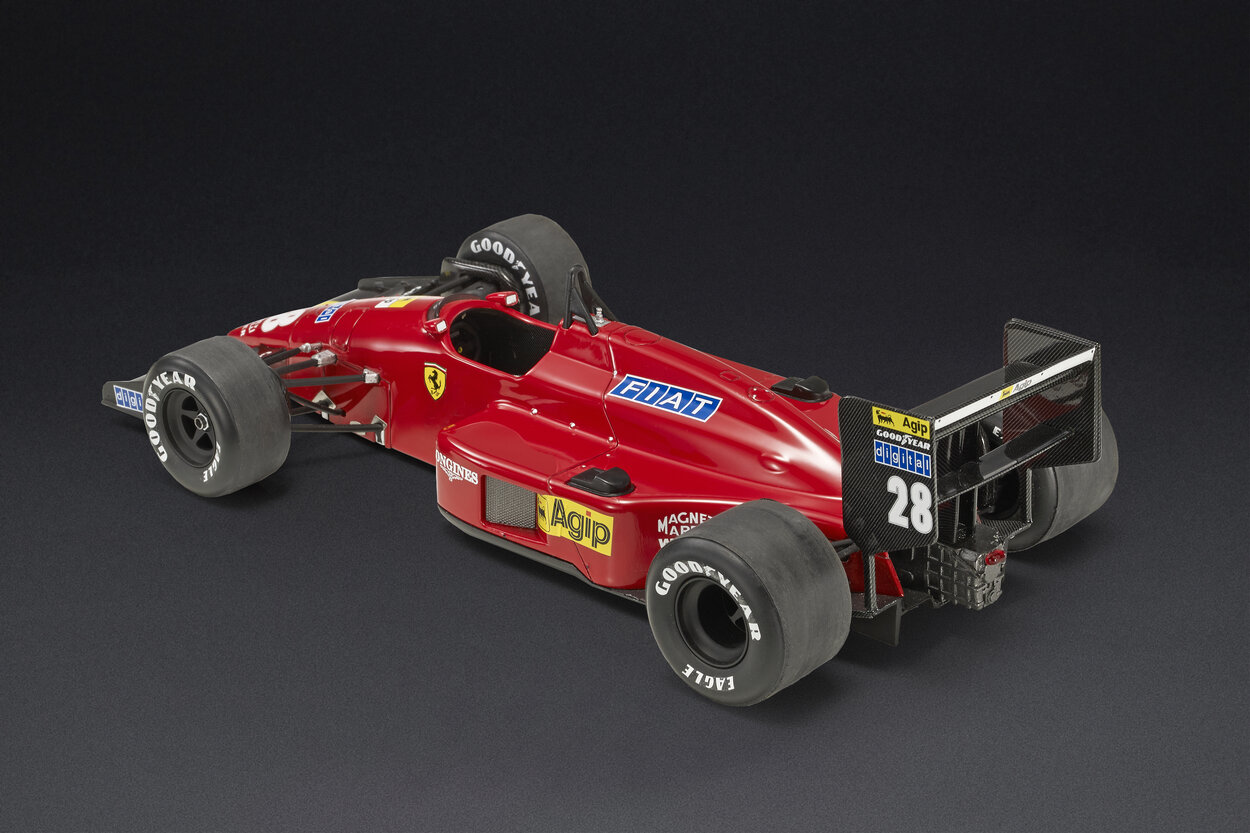Ferrari F1-87/88C
In anticipation of the 1987 season, Formula 1 regulations changed once again. Supercharging lost its exclusivity. Teams could continue racing with 1.5-liter turbo engines or use naturally aspirated 3.5-liter engines. Most teams continued to use turbo engines, if only to justify the significant investments made in recent years. This was the path chosen also by Ferrari, which had a 6-cylinder engine with a cylinder bank angle of 90° that had debuted just the year before.
The company in Maranello was preparing for the Founder’s farewell. Enzo Ferrari was growing older, and his health had begun to deteriorate. A succession war erupted in Maranello – and in Turin. The Racing Management became a battleground. John Barnard, the English engineer who had turned McLaren into an unstoppable winning machine, revised the Formula 1 car previously designed by Gustav Brunner. Upon arriving in Maranello, Barnard immediately stated that if he had been in charge of the project from the beginning, he would have designed a different car. But so be it.

Drivers:
Michele Alboreto: In 1987 the Italian driver experienced an uninterrupted string of eight retirements between June and September. His season started with two third places at Imola and Monaco and ended with a second place in Australia. In between, there were struggles due to the fragility of the car he had in his hands. With the F1-87/88C, Michele finished second in the 1988 Italian Grand Prix and third in the Monaco and French Grand Prix.
Gerhard Berger: The Austrian, who joined Ferrari in 1987, brought the F1-87 to two victories in the last two races of his first season in Maranello, and the F1-87/88C to the historic victory at Monza in September 1988, a month after the passing of Enzo Ferrari. Two second places in Brazil and Belgium, combined with a series of top-six finishes and the points scored by his teammate Alboreto, allowed Ferrari to secure second place in the 1988 Constructors’ Championship.
Our model cars:

The F1-87 was narrow, slender, streamlined, with lower and shorter side pods compared to the previous model. Two victories in the last two races of the season attest to the goodness of the car, although on-track development was lengthy and having two people at the helm of the technical department did not make things easier. For the 1988 season, work was based on the good done in the previous one. The F1-87/88C is essentially the same car as the ’87, with a lower and sleeker engine cover, new front and rear wings, and a smaller fuel tank.


